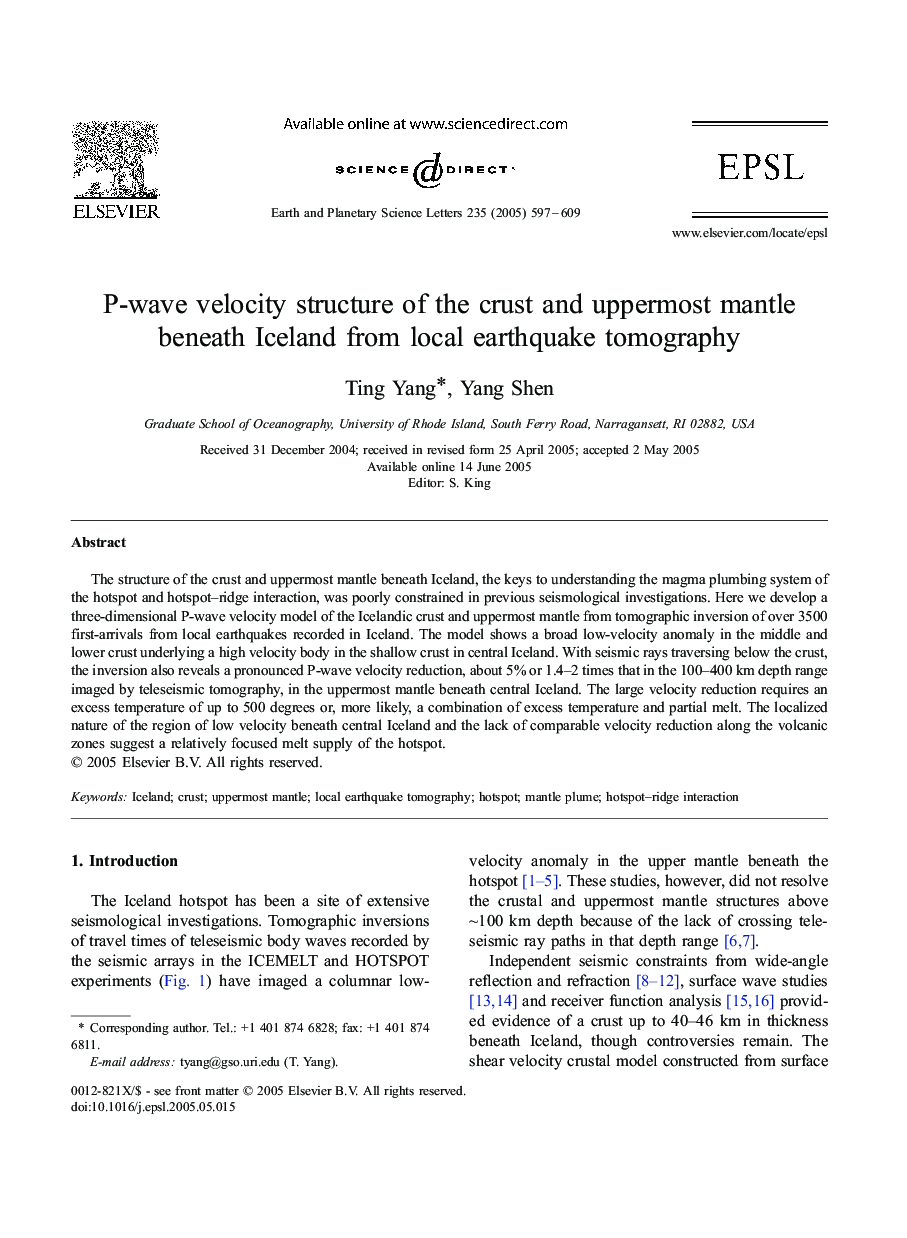| Article ID | Journal | Published Year | Pages | File Type |
|---|---|---|---|---|
| 9522213 | Earth and Planetary Science Letters | 2005 | 13 Pages |
Abstract
The structure of the crust and uppermost mantle beneath Iceland, the keys to understanding the magma plumbing system of the hotspot and hotspot-ridge interaction, was poorly constrained in previous seismological investigations. Here we develop a three-dimensional P-wave velocity model of the Icelandic crust and uppermost mantle from tomographic inversion of over 3500 first-arrivals from local earthquakes recorded in Iceland. The model shows a broad low-velocity anomaly in the middle and lower crust underlying a high velocity body in the shallow crust in central Iceland. With seismic rays traversing below the crust, the inversion also reveals a pronounced P-wave velocity reduction, about 5% or 1.4-2 times that in the 100-400 km depth range imaged by teleseismic tomography, in the uppermost mantle beneath central Iceland. The large velocity reduction requires an excess temperature of up to 500 degrees or, more likely, a combination of excess temperature and partial melt. The localized nature of the region of low velocity beneath central Iceland and the lack of comparable velocity reduction along the volcanic zones suggest a relatively focused melt supply of the hotspot.
Related Topics
Physical Sciences and Engineering
Earth and Planetary Sciences
Earth and Planetary Sciences (General)
Authors
Ting Yang, Yang Shen,
